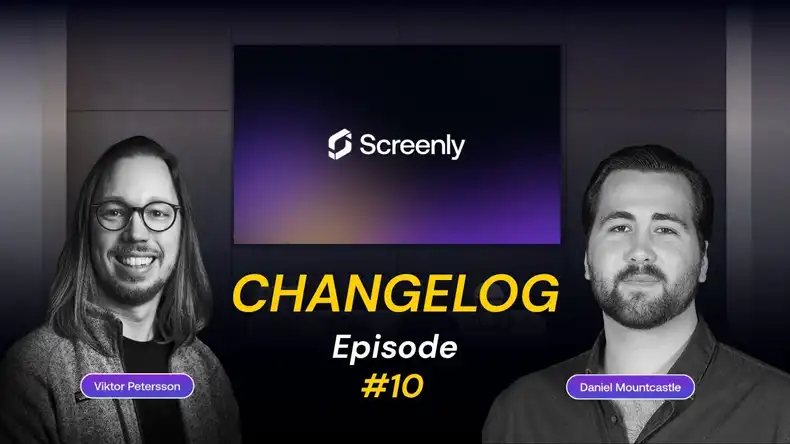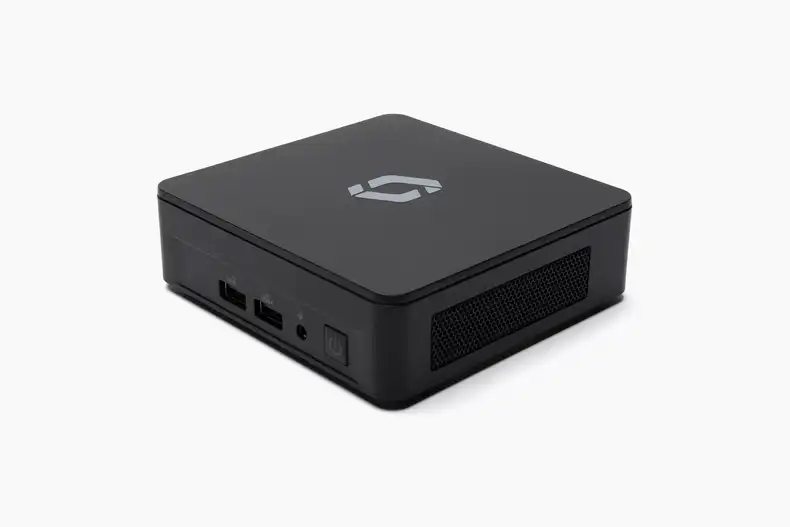Product/market fit is often tossed around as a buzzword in the technology industry, and many conversations that include product/market fit fail to define the term. Such conversations leave teams with a labeled yet unclear goal. As a result, efforts to achieve product/market fit are often disorganized, unmeasured, and, ultimately, unsuccessful.
Below, we detail how you can implement a disciplined process in your business to achieve product/market fit. We also describe how businesses can use digital signs to communicate with team members at each step along the way.
What is product/market fit?
In the summer of 2017, Rahul Vohra struggled to develop a data-driven roadmap to help his email-client startup Superhuman achieve product/market fit. Part of his struggle in developing that roadmap was that he could not find a clear definition for product/market fit. Notably, he could not find a definition that allowed his team to quantify the extent to which they were (or were not) achieving product/market fit.
To address this struggle, Rahul built off the findings of Sean Ellis, who used to run growth at Dropbox during the company’s early days. Sean defined product/market fit as having 40% or more of users respond “Very disappointed” when asked, “How would you feel if you could no longer use the product?”
Rahul then rolled out a process at Superhuman to prioritize product development tasks in a way that would increase the percentage of users who would be very disappointed if they could no longer use the product. With a measurable definition of product/market fit, Rahul could now assess and optimize his team’s development efforts.
What is the process for achieving product/market fit?
Below we’ll list the step-by-step process that the Superhuman team used to achieve product-market fit for their product. You can find the original article with more nuances and backstory on each step of the process on First Round Capital’s blog. Here’s the process:
Step One
Ask your customers the following questions:
-
How would you feel if you could no longer use our product? (Multiple choice answers include, very disappointed, somewhat disappointed, and not disappointed.)
-
What type of people do you think would most benefit from our product?
-
What is the main benefit you receive from our product?
-
How can we improve our product for you?
Make sure that you only ask customers who have experienced the benefits of your product. Do not ask the above questions to every new sign up.
Step Two
Record the percentage of respondents who stated that they would be “Very disappointed” if they could no longer use your product. That percentage is your baseline product/market fit score.
Step Three
Assign a persona to each user who completed the survey. If you do not have much information on each user in your CRM, you can take the user’s response to question two in step one. In most cases, the user describes themselves in the answer. If you wish, you can include a fifth question on the user’s job description or role in his company to collect further information for use in this step.
Step Four
List all personas of users who responded, “Very disappointed.” Next, remove users who are not of one of the listed persona types from your survey data. You will then have a list of users from a narrowed list of persona types who would be either “Very disappointed,” “Somewhat disappointed,” or “Not disappointed,” if they could no longer use your product.
From this new, smaller list, calculate the percentage of users who responded “Very disappointed” to question one. You will notice that you have increased your product/market fit score by simply limiting your list considered user personas.
Step Five
For users who answered, “Very disappointed,” make a Word Cloud out of their answers to the third survey question, “What is the main benefit you receive from our product?” From this exercise, you will be able to see which features your enthusiastic customers love the most.
Step Six
Select users on your narrowed persona list from Step Four, who answered that they would be “Somewhat disappointed” if they could no longer use your product. Make a Word Cloud out of their answers to the fourth survey question, “How can we improve our product for you?” From this exercise, you will be able to see which features are likely to convert users in the “Somewhat disappointed” group to users in the “Very disappointed” group. The more users in the “Very disappointed” group, the higher your product/market fit score.
Step Seven
Create a product road map where fifty percent of the tasks double down on features from Step Five. These tasks will have the goal of making users who answered “Very disappointed” be even more disappointed if they could no longer use your product. The other fifty percent of tasks should focus on tasks to build features from Step Six. These tasks will have the goal of making users who answered “Somewhat disappointed” become users who answer “Very disappointed.”
Step Eight
Prioritize your product road map developed in Step Seven. You can prioritize this road map by categorizing each development task as low, medium, or high impact and as low, medium, or high cost. Focus on the high-impact, low-cost tasks first to have the most significant effect on your product/market fit score in the least time possible.
That’s it
Sure, the process outlined above has quite a few details. However, it is a complete, step-by-step system to help your team achieve product/market fit. Importantly, this process is data-driven, and teams can track their improvements on product/market fit over time. If you have any questions on some of the finer details of this process, please take a look at the original article How Superhuman Built an Engine to Find Product/Market Fit. It’s a great read!
How can I use digital signs to help my team achieve product/market fit?
Once your team starts collecting survey data from your customers and measuring your business’s product/market fit score, you need to communicate this data with your team. It is not enough to develop a product road map based on the above process and tell the team what to do next.
Each team member needs to review and understand the data that comes out of the surveys, and each team member needs to understand the motivations and customer needs behind each new development task. With this communication, teams will feel motivated to develop the product in a way that generates the most value to customers.
One tool that businesses can use to help with that communication is a digital sign. A digital sign is any TV or monitor that plays relevant and often repeated information to an audience. Digital signs are usually in high-visibility areas, like on a central wall in the office.
With a digital sign, teams can display the Word Cloud from Step Five or Step Six on a digital sign. Additionally, teams can display the business’s product/market fit score over time and data on each task’s progress in the product road map. With this information easily visible, the business’s product/market fit score and efforts to improve the score will remain top-of-mind for each member.
How can I build my first digital sign?
To build your first digital sign, you will need a few components. First, you will need digital signage software, which allows you to upload and schedule content to display on your digital sign. You can upload images of your business’s Word Clouds or even a URL link for a live graph of your business’s product-market fit score over time.
You will also need a digital signage player and a TV or monitor that accepts HDMI input. A digital signage player pulls content from your digital signage software and renders the content to your TV or monitor. When these three components come together, you will have your first digital sign! You can then use this digital sign to communicate key information from each step of the product/market fit process.
We hope this article was both informative and helpful! If you have any questions about setting up your first digital sign, feel free to reach out to us at Screenly Support!
To get started with Screenly digital signage, sign up for a 14-day free trial.





